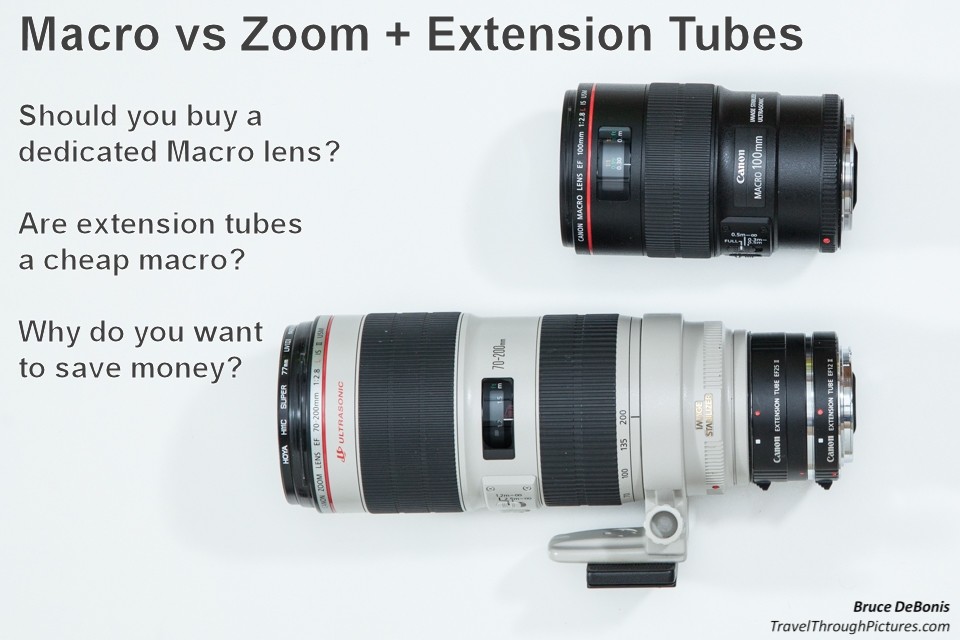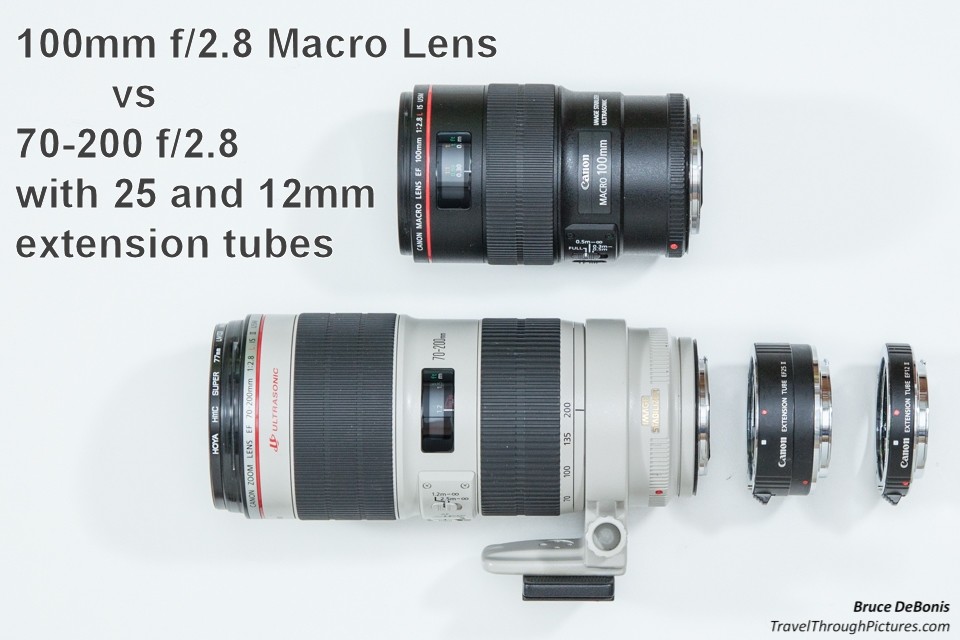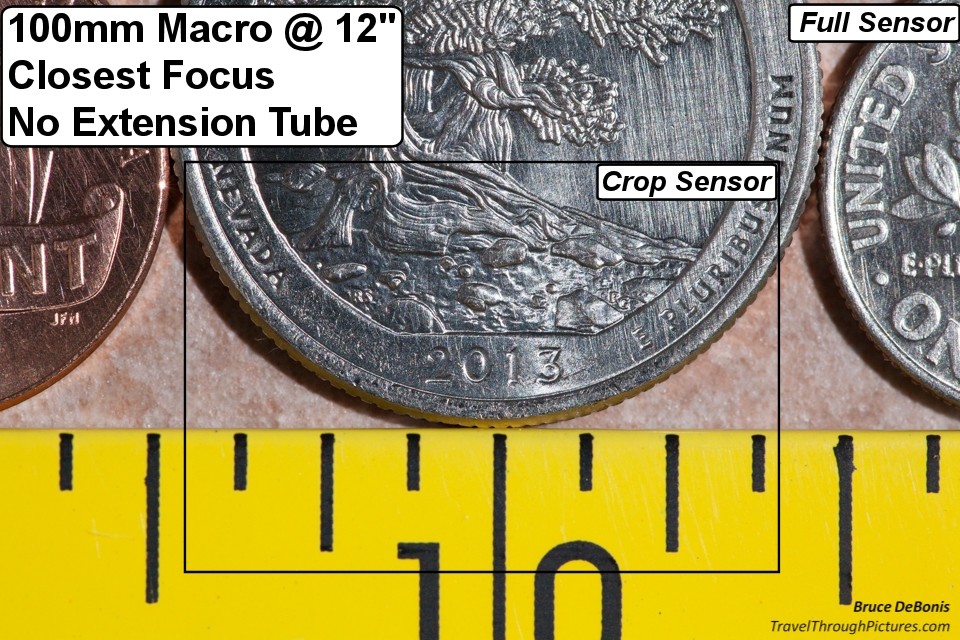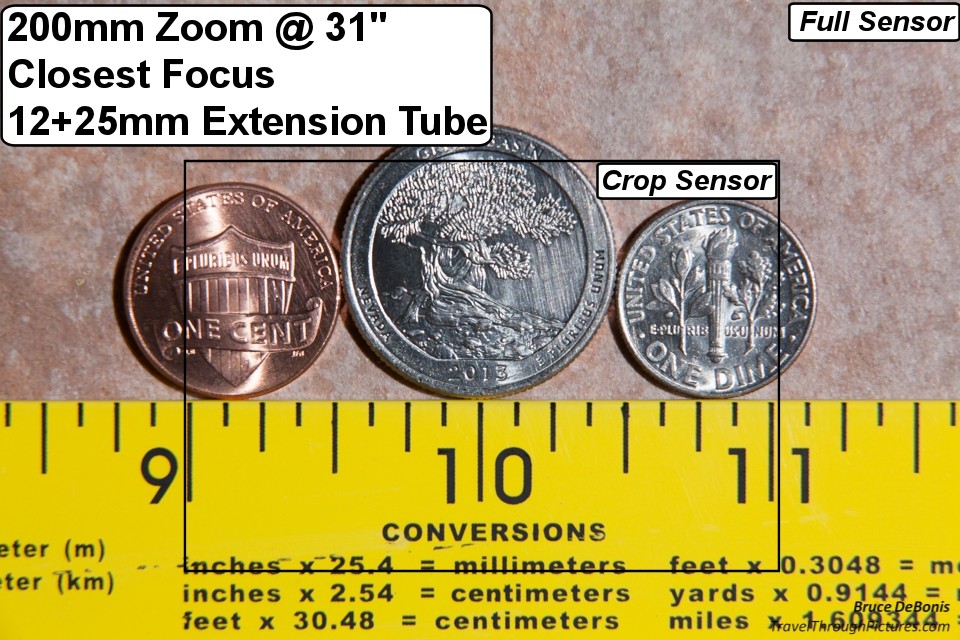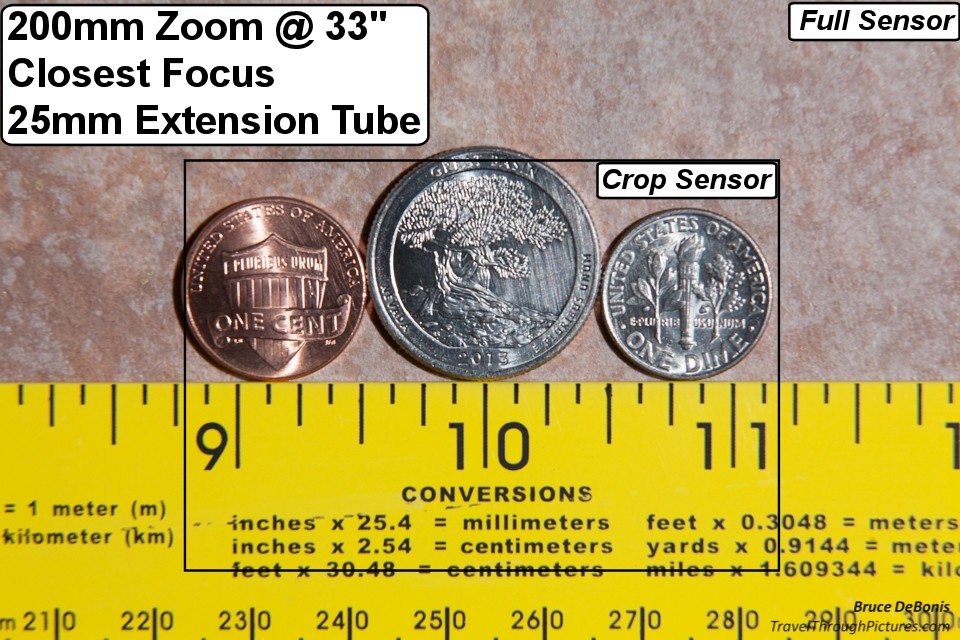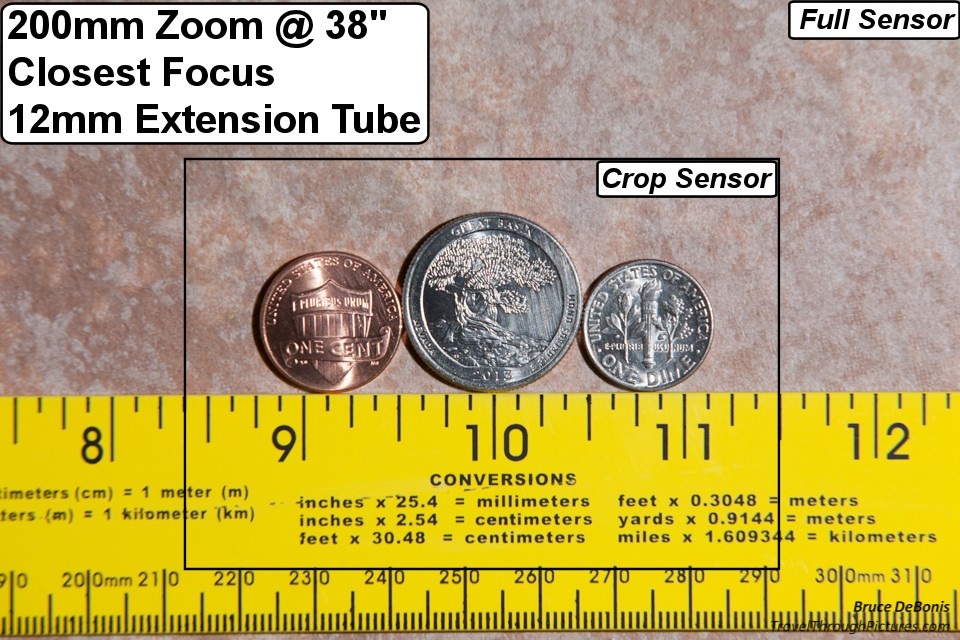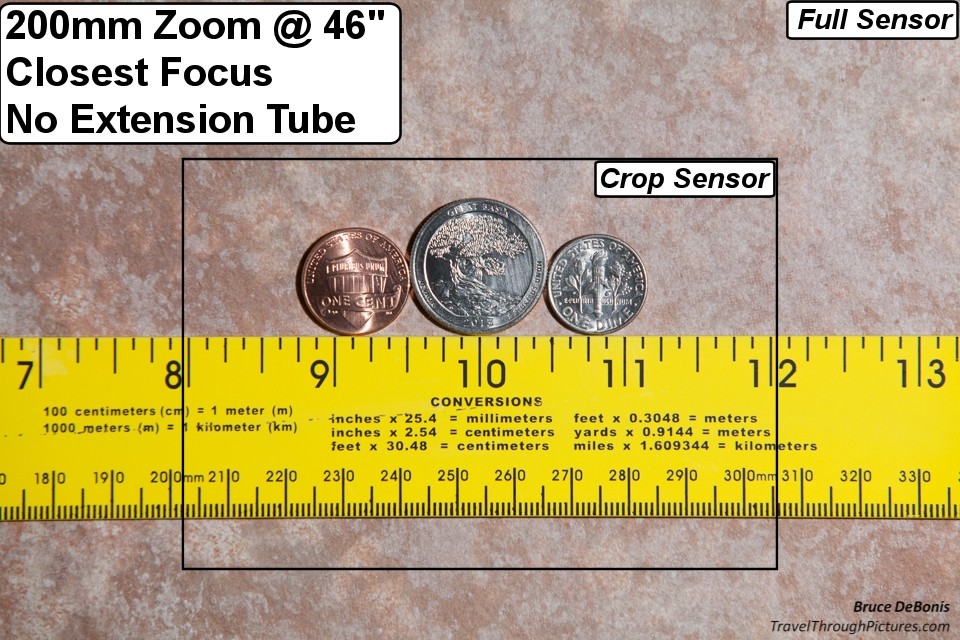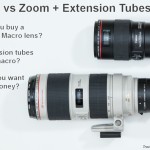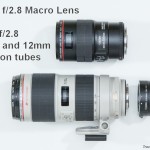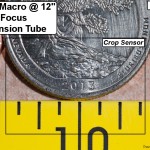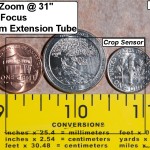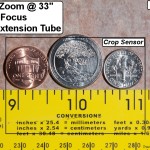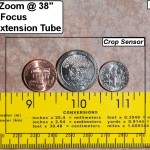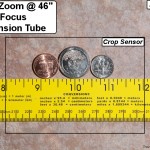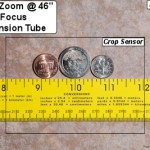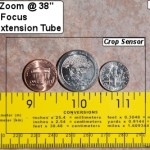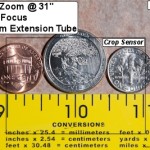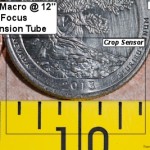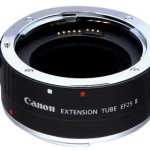Should you buy a macro lens or try extension tubes?
So you want to take pictures of bugs and flower parts eh? Your lens just won’t let you get that close and now you decided you must spend some bucks and buy a lens that calls itself “macro”. Well before you bury your head in time and research, try picking up a set of extension tubes instead. Most likely you have a zoom lens and by adding an extension tube, you can turn it into a pretty decent macro lens.
Here is my straight forward recommendation: Don’t buy a macro lens, try extension tubes first and save your money. Try an extension tube or two before you buy a macro lens and if you are not satisfied with the magnification, then buy a dedicated macro lens of at least 100mm or greater. The biggest cost to tubes over a macro is that a dedicated macro will give you more magnification; however I found that extra magnification unnecessary when shooting flowers and bugs.
Scroll down for example pictures of a macro lens vs a zoom with extension tubes (also in the carousel above).
Cost comparison
- Cost for Canon extension tubes (approximate): EF 12 II – $84, EF 25 II – $144
- Cost for alternative brand of tubes (approximate): $80 for three rings of different sizes
- Cost of a Canon 100mm lens: $550 to $900 depending on quality and features
Click here for more information on extension tubes: Turtle Heads and Extension Tubes
Click here for a discussion on crop vs full sensors: Crop vs Full Sensors
Some Background – My Geek Journey
I totally got into photography with a Canon XTI, a camera that took good but not great photos, and decided to upgrade my equipment. My current rig is a full frame Canon 5D MKII (I have a new 5DS R on order!!!) and along with the really good Canon 24-105 L f/4.0 IS that came with the kit, I splurged and purchased the Canon 70-200mm L f/2.8 IS II zoom (about $2,000). This zoom is one of Canon’s best lenses period. I never regretted spending the big money for this quality stuff at all.
Next, I wanted to shoot macro….. now what to do? I was tight on cash so I read about extension tubes and how they can turn any lens into one that can focus real close to a subject thus getting more magnification. I purchased a set of Canon tubes and they worked out spectacularly. I really loved using them and they just worked so well, years went by and I shot all the macro I wanted and I didn’t need a dedicated macro lens.
But, I still had the itch for a real macro so I sprung for Canon’s new Canon 100mm f/2.8L Macro IS (about $1,000). I have been using this very highly rated lens for over a year now, and while I really like this lens, I have to be honest with myself. The 70-200 with extension tubes did the same for me. I really did not need to buy this lens. Below, I go into the tradeoffs to help you make this decision.
What is “Macro” Anyway?
The short answer is the following: Macro photography is taking pictures of small things close up. This requires a lens that can focus when very close to your subject. Every lens has a limit on how close you can get to a subject due a nasty thing called the laws of physics and the quickly escalating cost to design and build a lens that does many things.
Lens makers call out their lenses that can focus at close distances a “macro lens”. However, there is no industry standard as to what focusing distance qualifies as macro. And just because a lens denotes “macro” on the focusing ring does not qualify it as a good macro lens. For that, only a lens denoted as “Macro” in its name should be considered.
By the way, if you are considering a true macro lens, make sure it is at least 100mm or longer else it will be a waste as extension tubes will get you the similar results but for way less money.
Extension Tubes – What are they?
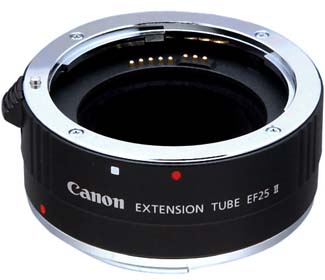 Extension tubes are nothing more than rings that fit between your camera body and lens. Their purpose is to push the lens farther away from the sensor thus changing its focus range. They allow you to move very close to your subject. There are no lenses in these tubes and you can poke your fingers straight through them. They do contain electrical contacts that pass control information from camera to lens, but other than moving your lens, they do nothing else. They have no optical properties of their own. You don’t lose light so there is no compensation for f/stop either. They really are something for nothing… well almost, you can’t focus on far away subjects.
Extension tubes are nothing more than rings that fit between your camera body and lens. Their purpose is to push the lens farther away from the sensor thus changing its focus range. They allow you to move very close to your subject. There are no lenses in these tubes and you can poke your fingers straight through them. They do contain electrical contacts that pass control information from camera to lens, but other than moving your lens, they do nothing else. They have no optical properties of their own. You don’t lose light so there is no compensation for f/stop either. They really are something for nothing… well almost, you can’t focus on far away subjects.
When you use an extension tube, the only cost is losing the ability to focus on infinity. In other words, you can no longer focus on things far away. That is ok, as the whole point of them is to focus up close. Of course, if while you are snapping away at a bug inside a flower blossom, an alien spacecraft buzzes the garden above you head, you won’t get the shot as your lens just won’t focus on things far away. Oh well, the bug in the flower was way more cool that getting the first pictures of the oncoming alien invasion anyway.
Canon makes two tubes that differ only in size. One is 25mm and the other 12mm. The differences are small but go ahead and get the 25mm. However, if you plan on using these tubes on a variety of lenses, you may be best served by the 12 mm as the larger tube will require you to get physically closer to your subject. If you really want to get close, install both of them…. yea, that is crazy talk! But you can do it and have fun learning and experimenting with this relatively inexpensive technology.
Another option is purchasing a less expensive non-Canon (or Nikon) brand of tubes such as Kenko and Vello. I have never tried these off-brand units but there is no reason they can’t work as well as the Canon models. Just make sure the rings pass electrical signals for auto focus and aperture functions to continue working.
What about magnifying filters and other add ons? I generally don’t recommend them as they add more glass between your camera and subject. Usually, this means you will loose some image quality, add some distortions, and diminish the amount of available light. When shooting macro, having a good supply of light is very important as it will allow you to “stop down” your lens get better depth of field (i.e., making your aperture smaller, a larger number, will give you deeper focus).
Advantages and Disadvantages to Rings
There are three disadvantages to rings and conversely, these are the biggest advantages to a dedicated macro lens: 1) Focus on infinity: macro rings take away this ability, 2) Size and weight: Zooms with macro rings are larger and heavier than a dedicated macro lens, and, 3) Magnification: 100mm dedicated macro lenses can make more magnification than a zoom with rings.
I already noted the loss of focusing on infinity, but there are other disadvantages. The biggest, particularly with my rig, is weight and size. The Canon 100mm that I own is significantly smaller and lighter than that big 70-200 f/2.8 monster lens. Honestly it is no bother to me with the bigger rig, but smaller is a bit easier carry and deal with.
Another loss with rings is that you can’t get the magnification of a dedicated 100mm true macro lens. Note that I didn’t put this as my biggest issue yet isn’t the whole point of macro is to make small things big? Why isn’t this important? I thought I would need the magnification but I just don’t use it. I am your typical geek and therefore more is always better. I want to see molecules!!! Yes, a 100mm macro lens will allow you to get more magnification, but I find the macro shooting I do, if it is a bug or flower part, works fine with the extension tubes. I am just not using the 100mm to its full potential and I don’t care.
Magnification: What you get
Below are a few shots that show the magnification capabilities of both my Canon 100mm macro lens and my 70-200 lens with extension tubes. My Canon 5D Mk II is a full sized sensor so I provided the additional frame lines for a typical crop-sensor DSLR like a Canon Rebel. If you don’t know what size sensor your DSLR is, just check the manual but assume it is a crop sensor as only the top-of-the-line, expensive DSLRs have full, 35mm-sized sensors.
Note the first pic is the only pic using the Canon 100mm f/2.8 Macro IS lens and it has the highest magnification. The others are using the 70-200 f2.8 zoom with and without various extension tube combinations. The last pic is the 70-200 zoom at 200 without tubes; this shows you the most magnification you can get with this lens by itself.
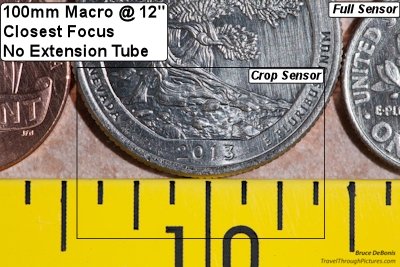
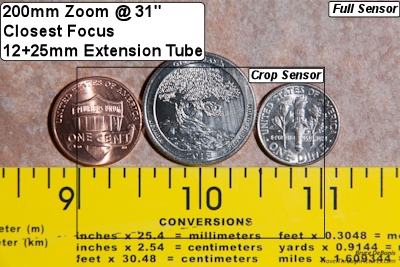
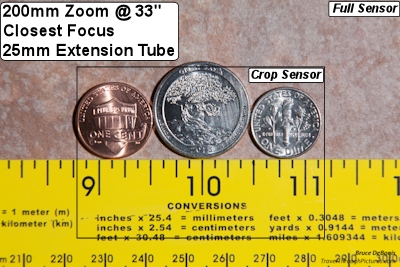
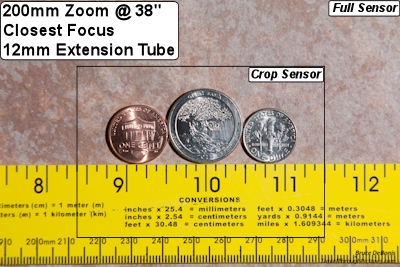
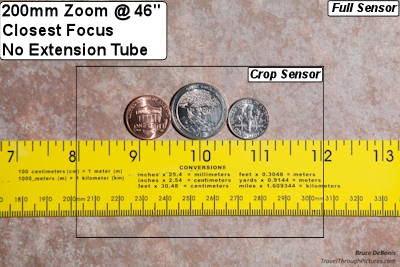
I shot the above with off-camera flash, 1/125 sec, f/8.0, ISO 200 and positioned each configuration at its closest focusing distance. Focusing distance was measured subject to the film plane (where the sensor is located) and not the tip of the lens. The post processing I did was tweak the brightness to assure all pictures appeared equal, added the text, and resized the JPGs in the carousel above to be 960 X 640 pixels, and the small pics directly above to be 400 X 266 pixels.
I did not shoot the 100mm macro lens with extension tubes as its closest focusing distance was 12” which put the tip of the lens about 4” from the subject; a distance that for all practical purposes, is about as close as you want to get. You absolutely could use extension tubes with this 100mm macro lens and get even more magnification, but you working distance would put the subject incredibly close to the front of your lens and this will cause lighting problems as your camera will most likely be blocking your light. To address this lighting issue, Canon and others make specialty ring flashes…. but that is story for another day.
I shot the 70-200mm zoom at 200mm as this will give you the most magnification but not by much over shooting it a 100mm. One of the bigger advantages to a zoom over a dedicated macro is that you have two options for focus, the zoom ring and focus ring. This gives you some flexibility with framing your subject and can be very handy when you are using a tripod and don’t want to move the tripod all the time.
The Equipment:
- Canon 5D MkII
- Canon EF 100mm f/2.8L Macro IS
- Canon EF 70-200mm L f/2.8 IS II, with
- Canon EF 12 II and 25 II extension tubes
- LightRoom 6.0 – Raw processing
- Corel PaintShop Pro X4 – Add text and lines to JPGs

